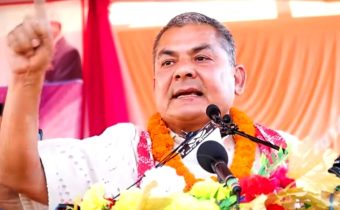Human life begins with the heartbeat and continues until the heart stops. That’s why the heart is one of the most vital organs in the body. It pumps blood throughout the body, delivering oxygen and essential nutrients. According to the World Health Organization, heart and circulatory diseases are the leading causes of death globally. Every year, around 18 million people die due to these conditions. Four out of five of these deaths are caused by heart attacks and strokes.
Cardiologists emphasize that daily care is essential to keep the heart healthy. A healthy adult’s resting heart rate should be between 60 and 100 beats per minute. American cardiologist Dr. Evan Levin says, “By maintaining a balanced diet, exercising regularly, and avoiding tobacco products, we can reduce damage to the heart from an early age.”
What Is a Heart Attack?
A heart attack occurs when blood flow to the heart is suddenly blocked. When the supply of blood stops, oxygen can’t reach the heart, and the heart muscles begin to suffer damage. If not treated promptly, this damage can become permanent.
If a large portion of the heart is affected, the heartbeat stops—this is called cardiac arrest. It can lead to death. Nearly half of heart attack deaths occur within 3–4 hours of symptom onset. That’s why emergency treatment is critical as soon as symptoms appear.
The main cause is coronary heart disease, where plaque builds up in the arteries, narrowing them and reducing or blocking blood flow.
In the U.S., nearly 800,000 people suffer heart attacks each year. Of these, about 500,000 experience it for the first time, while 300,000 have had it before. According to the Centers for Disease Control and Prevention (CDC), on average, one person in the U.S. has a heart attack every 40 seconds.
How to Recognize It?
Symptoms of a heart attack can vary. The most common symptom is chest pain. It may not start as sharp pain but rather a feeling of pressure or tightness. Some people also feel pain in the neck and both arms.
California-based cardiologist Dr. Aileen Barseghian says, “Sometimes people mistake a heart attack for indigestion. But unlike indigestion, heart attack pain can spread to other parts of the body like the left arm, back, or abdomen.”
Other symptoms include dizziness, lightheadedness, excessive sweating, and difficulty breathing.
In some cases, symptoms appear suddenly, but sometimes warning signs show up hours or days in advance—such as chest pain that doesn’t go away even at rest.
Dr. Barseghian adds, “If blood flow isn’t restored within three hours, heart muscle begins to die. That’s why chewing aspirin while waiting for an ambulance can help.” Cardiologists stress, “If you suspect a heart attack, seek emergency care immediately.”
Dr. Evan Levin advises, “Understand your risk—if you have factors like age, weight, smoking, alcohol use, or a family history of heart disease, and you feel chest pressure, go to the hospital immediately.”
Gender Disparities in Research and Treatment
Researchers note that cardiovascular disease has long been considered a “man’s disease.” As a result, fewer studies include women, and treatments are often tested on men and then applied to women.
A study involving 300,000 people in the UK examined access to heart disease treatment. Published in the British Medical Journal Heart, the report revealed that marginalized and oppressed communities are often deprived of easy access to heart care.
According to the UK’s National Health Service, some risk factors—such as high blood pressure, smoking, and diabetes—may affect women more than men.
How to Prevent Heart Attack
– Maintain a balanced diet, exercise regularly, and control cholesterol and blood pressure.
– Cholesterol is essential for building healthy cells, but excessive levels increase heart disease risk.
– Eat low-fat, high-fiber foods. Limit salt intake to less than 5 grams per day.
– Reduce processed foods and saturated fats like red meat, cakes, biscuits, butter, sausages, and palm oil.
– Choose unsaturated fats—natural sources like fish, avocado, nuts, and vegetable oils.
– Combine a balanced diet with regular exercise for the most effective heart protection.
– Maintaining a healthy weight helps control blood pressure.
– For those who’ve already had a heart attack, about 20% may suffer another within five years—so extra caution is needed.
Rising Risk Among Youth
Typically, heart attack risk increases with age, but in recent years, rates among younger people have also risen. According to the U.S. National Center for Health Statistics, in 2010, 0.55% of people aged 35–54 had heart attacks. By 2018, this rose to 0.75%.
Dr. Evan Levin attributes this to unhealthy lifestyles among youth—excessive consumption of processed food and lack of exercise.
He says, “We all need to walk more. You don’t have to go to the gym, but some form of exercise is necessary. After COVID, people working from home have developed lazy habits.”
Smoking causes fat buildup in arteries, and experts like Dr. Levin are also concerned about the unknown effects of vaping.
Dr. Barseghian adds, “Genetic risks also increase the likelihood of heart attack at a younger age. Stress, lack of sleep, and poor lifestyle choices are now recognized as major contributing factors.”









